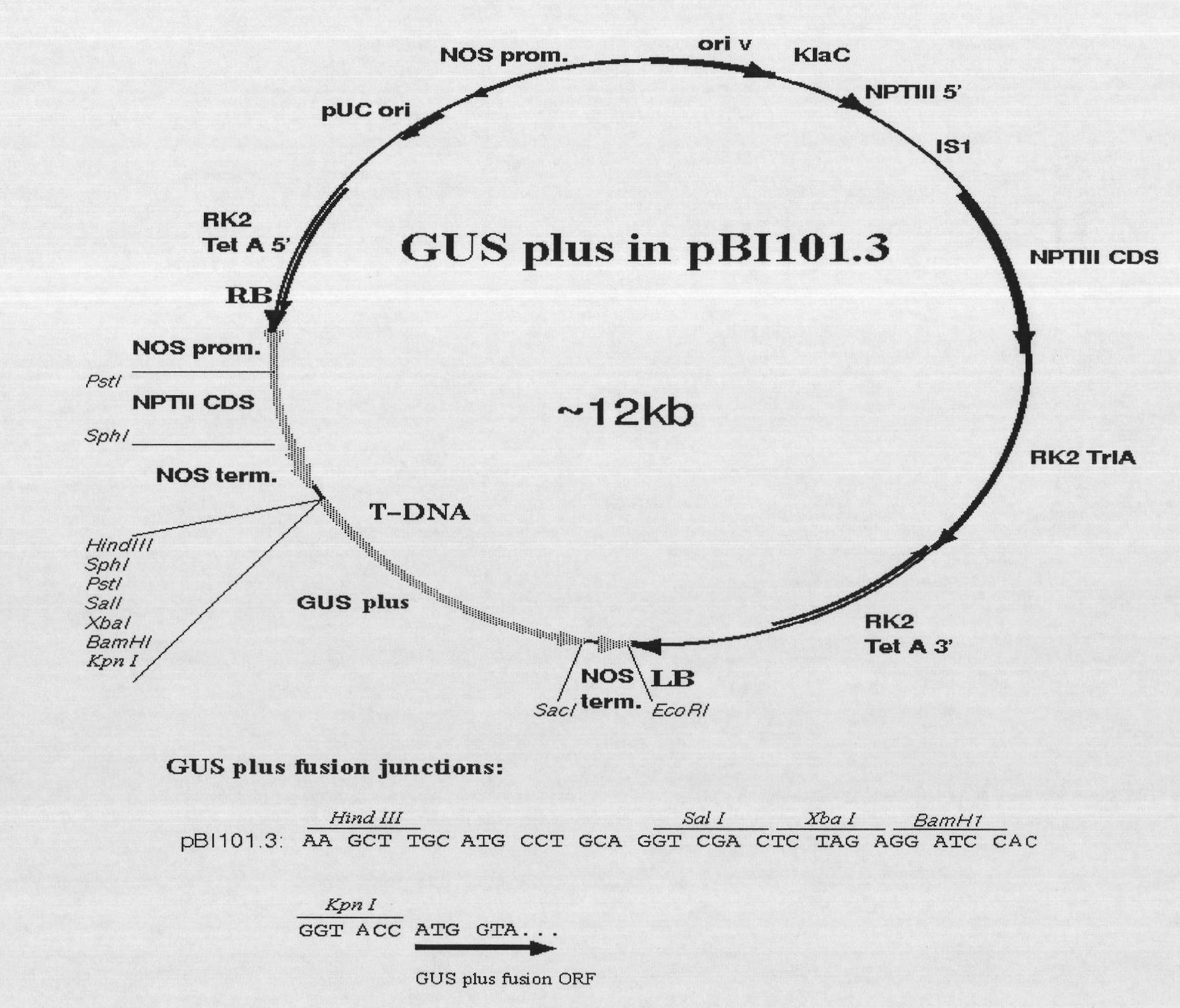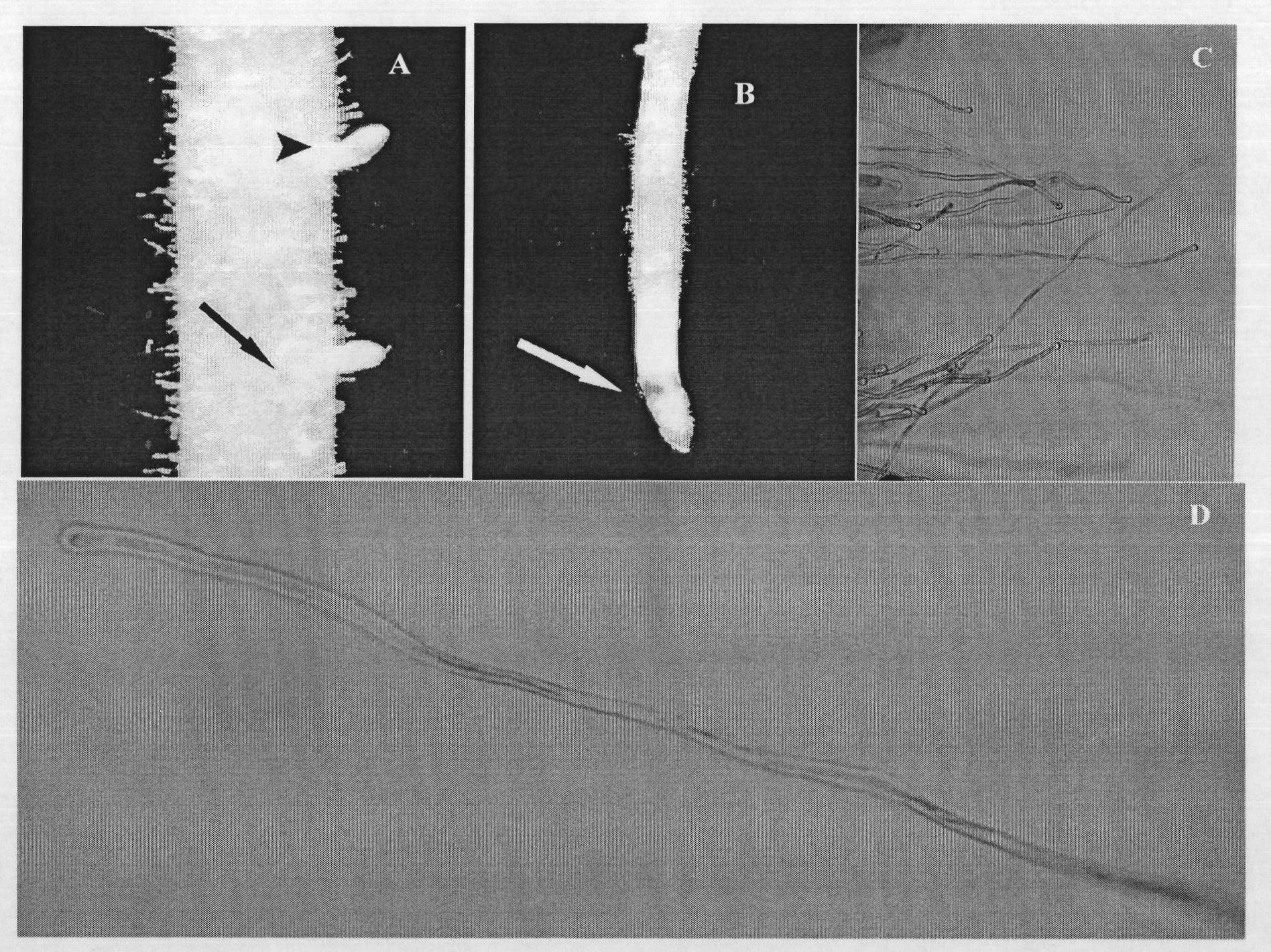Rice root hair elongation regulatory gene OsEXP17 promoter and application thereof
A technology for regulating genes and promoters, applied in the field of plant genetic engineering, can solve the problems of few types of crops, no intellectual property rights, limited quantities, etc.
- Summary
- Abstract
- Description
- Claims
- Application Information
AI Technical Summary
Problems solved by technology
Method used
Image
Examples
Embodiment 1
[0029] Semi-quantitative RT-PCR results ( figure 1 ) showed that the OsEXP17 gene was only expressed in the roots of rice plants. The primers for the OsEXP17 (LOC_0s06g01920) gene promoter were designed according to the genome sequence of indica rice 9311. The upstream primer sequence (5'-3') was tgaagcccaggtttgattga; the downstream primer sequence (5'-3') was gccatgctattgtcgtcgat. Using the wild-type Kasalath genome as a template, the OsEXP17 gene promoter was amplified with LA Taq DNA Polymerase, with a full length of 2563bp, and its nucleotide sequence is shown in SEQ ID NO:1. After the PCR product was recovered by electrophoresis, it was connected to the pUCm-T vector, transformed into DH5α competent cells, and positive clones were picked, and positive clones were picked for enzyme digestion detection, and sent to the sample for sequencing. Combine the sequenced correct clone with the pBI101.1-GUS plus vector ( figure 2 ) were digested with BamHI and KpnI respectively,...
PUM
 Login to View More
Login to View More Abstract
Description
Claims
Application Information
 Login to View More
Login to View More - R&D Engineer
- R&D Manager
- IP Professional
- Industry Leading Data Capabilities
- Powerful AI technology
- Patent DNA Extraction
Browse by: Latest US Patents, China's latest patents, Technical Efficacy Thesaurus, Application Domain, Technology Topic, Popular Technical Reports.
© 2024 PatSnap. All rights reserved.Legal|Privacy policy|Modern Slavery Act Transparency Statement|Sitemap|About US| Contact US: help@patsnap.com










